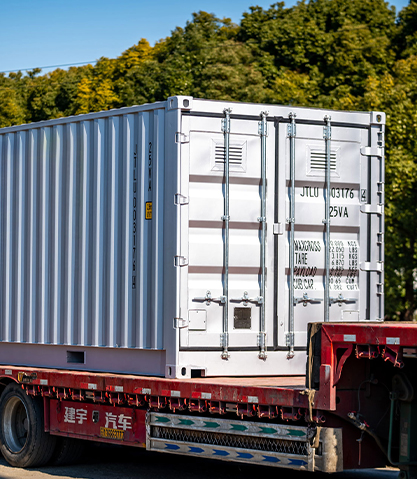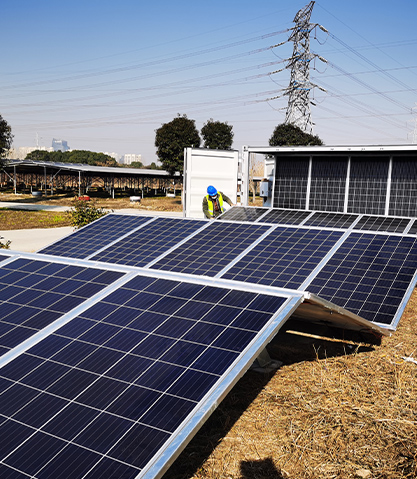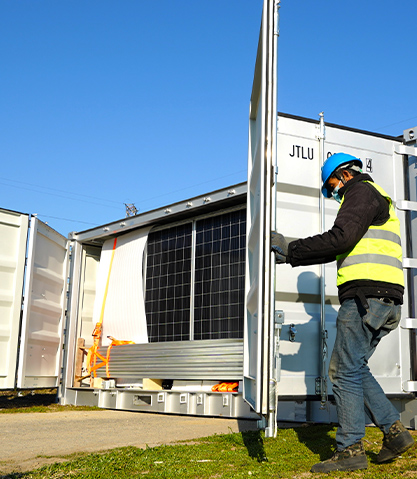Senta Energy Planting Cabin
Recently, the first batch of soilless cultivated tomatoes in Senta Energy's planting cabin has been harvested. So today, let's introduce the planting process of soilless cultivated tomatoes.

The process and advantages of soilless cultivation of tomatoes
I. The process of cultivating Tomatoes through soilless cultivation
Soilless cultivation refers to a cultivation method that does not rely on natural soil but uses nutrient solutions or artificial substrates to provide nutrients and growth environments for plants. Take tomatoes as an example. The soilless cultivation process mainly includes the following steps:
Select the cultivation system
Hydroponic system: Tomato roots are directly immersed in nutrient solution, suitable for greenhouse or indoor environments.
Substrate cultivation: Use substrates such as coconut coir, rock wool, and perlite to fix the root system, and provide nutrient solution through a drip irrigation system.
Aeroponics system: By directly spraying nutrient solution onto the root system through mist, it is suitable for scenarios where space is efficiently utilized.
2. Prepare the cultivation facilities
Build cultivation troughs or planting racks, and install drip irrigation, circulation systems (hydroponics) or spray devices (aeroponics). Ensure that the facilities have the ability to control light, temperature and humidity (such as in a greenhouse environment).
3. Seedling raising and transplanting
Seedling raising: Use soilless seedling substrates (such as vermiculite, coconut coir) to cultivate tomato seedlings, and control the temperature (20-25℃) and light.
Transplanting: Transplant the seedlings into the cultivation system, fix the root system and connect to the nutrient solution supply system.






4. Nutrient solution management
Adjust the nutrient solution formula according to the growth stage of tomatoes (seedling stage, flowering stage, fruiting stage), with the main elements including nitrogen, phosphorus, potassium, calcium, magnesium and trace elements.
Regularly test the pH value (5.5-6.5) and EC value (electrical conductivity, reflecting nutrient concentration) of the nutrient solution to ensure nutrient balance.
5. Environmental regulation
Lighting: Provide 12 to 16 hours of lighting per day, and LED supplementary lights can be used.
Temperature: 20-28℃ during the day, 15-20℃ at night.
Humidity: Keep it at 60%-70% to prevent diseases from occurring.
Ventilation: Ensure air circulation to reduce the risk of pests and diseases.
6. Plant management
Pruning: Use single stem pruning or double stem pruning, and remove lateral branches to concentrate nutrients.
Thinning fruits: Retain an appropriate amount of fruits based on the growth condition of the plant to avoid overloading.
7. Pest and disease control
Adopt physical control methods (insect-proof nets, yellow boards) and biological control methods (natural enemy insects, biological pesticides) to reduce the use of chemical pesticides.
Regularly inspect the root system and leaves, and promptly detect and deal with diseases.
8. Harvesting and subsequent management
Harvest the fruits in batches according to their ripeness to avoid overripening or damage.
After harvest, clean the cultivation system, replace the substrate or disinfect the facilities, and prepare for the next round of cultivation.

The advantages of soilless cultivation of tomatoes
Increase output and quality
Soilless cultivation can precisely control nutrient supply, promote the rapid growth of tomatoes, and increase the yield by 30% to 50% compared with traditional soil cultivation.
The fruits are uniform in size, bright in color, have a higher content of sugar and vitamins, and a better taste.
2. Save resources
Water conservation: The hydroponic system can recycle nutrient solutions, achieving a water conservation rate of over 90%.
Fertilizer saving: High nutrient utilization rate, reducing fertilizer waste.
Land-saving: It can be cultivated in a three-dimensional manner, significantly increasing the yield per unit area.
3. Avoid soil-borne diseases
Soilless cultivation is detached from the soil, effectively reducing the occurrence of soil-borne diseases such as root rot and fusarium wilt, and lowering the use of pesticides.
4. Controllable environment
The greenhouse environment can be regulated throughout the year, not restricted by seasons or regions, enabling off-season production and year-round supply of tomatoes.
5. Reduce labor intensity
The automated drip irrigation and nutrient solution circulation system reduce manual operation and lower labor costs.
6. Eco-friendly
Reducing the use of chemical fertilizers and pesticides and lowering agricultural non-point source pollution are in line with the concept of sustainable development.
7. Strong adaptability
Production can be carried out in areas such as deserts, saline-alkali land and urban rooftops that are not suitable for traditional agriculture, thus expanding the agricultural space.

 English
English 中文简体
中文简体 عربى
عربى



